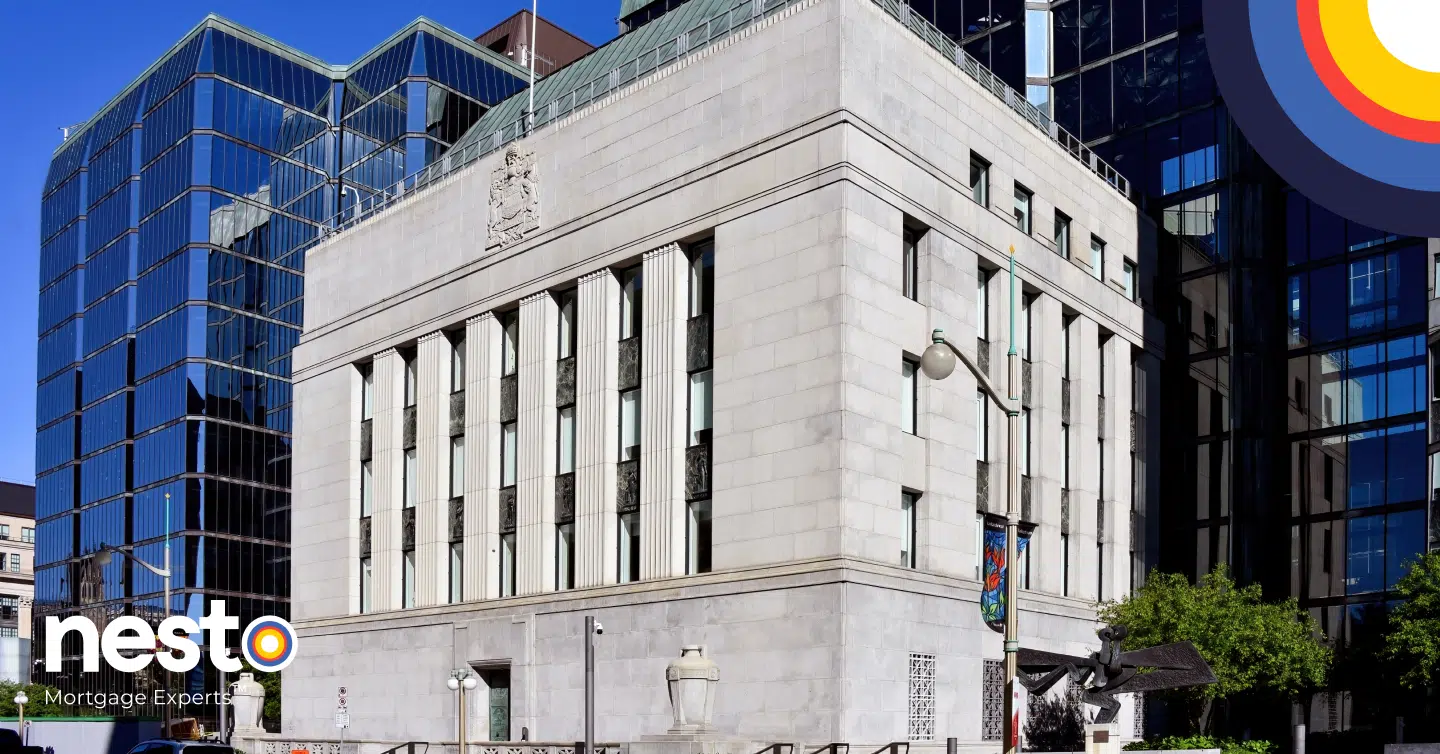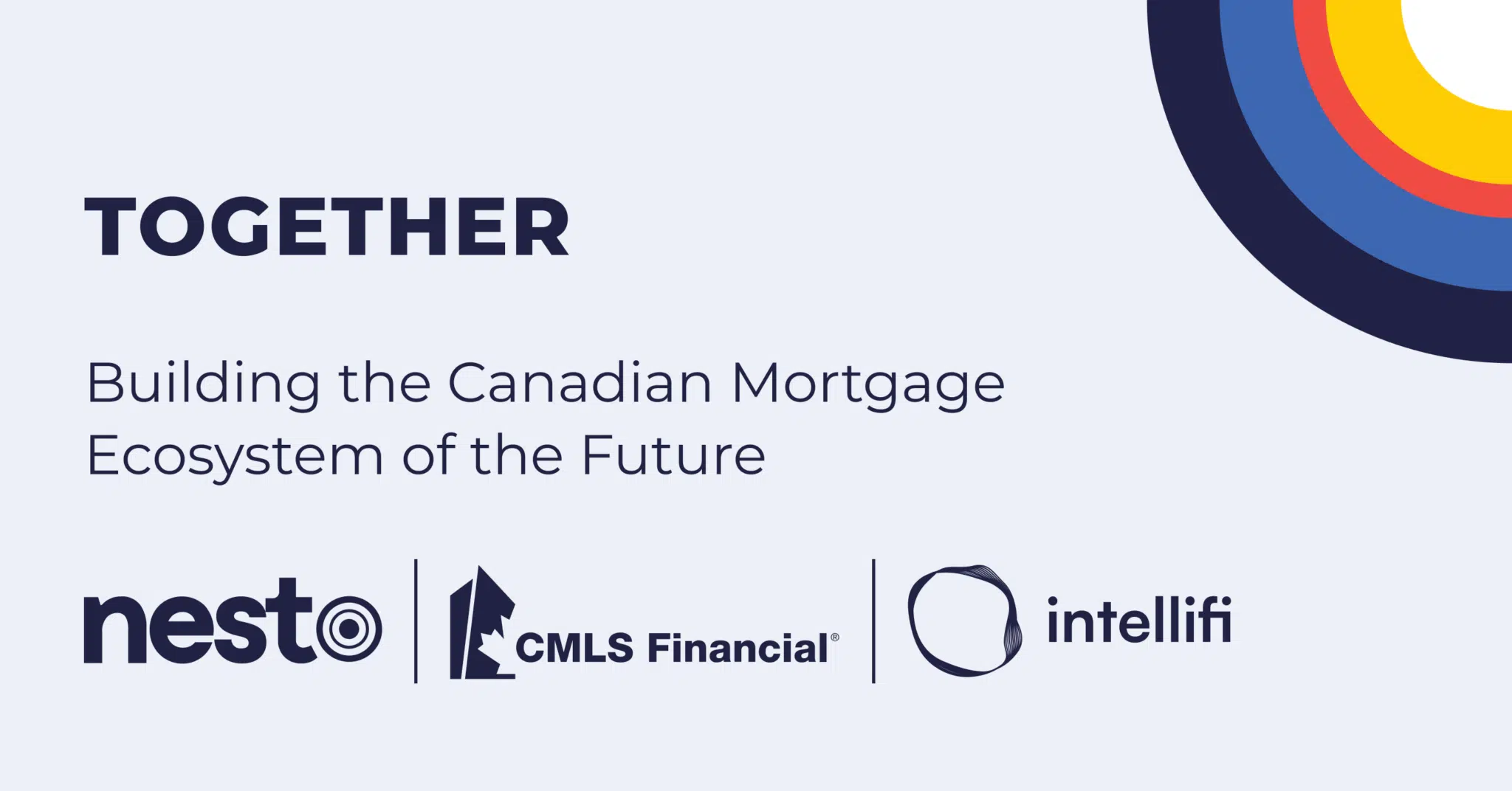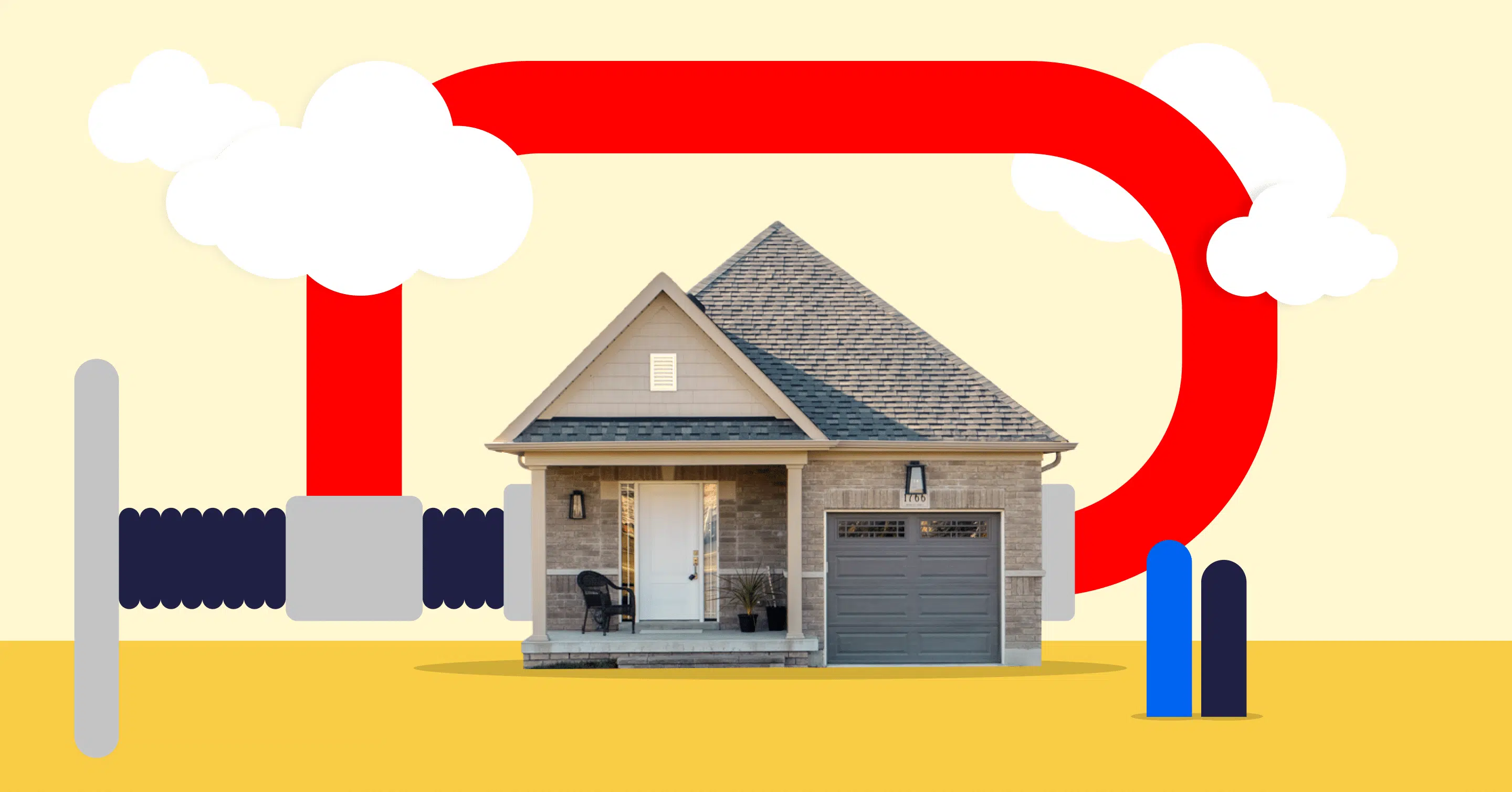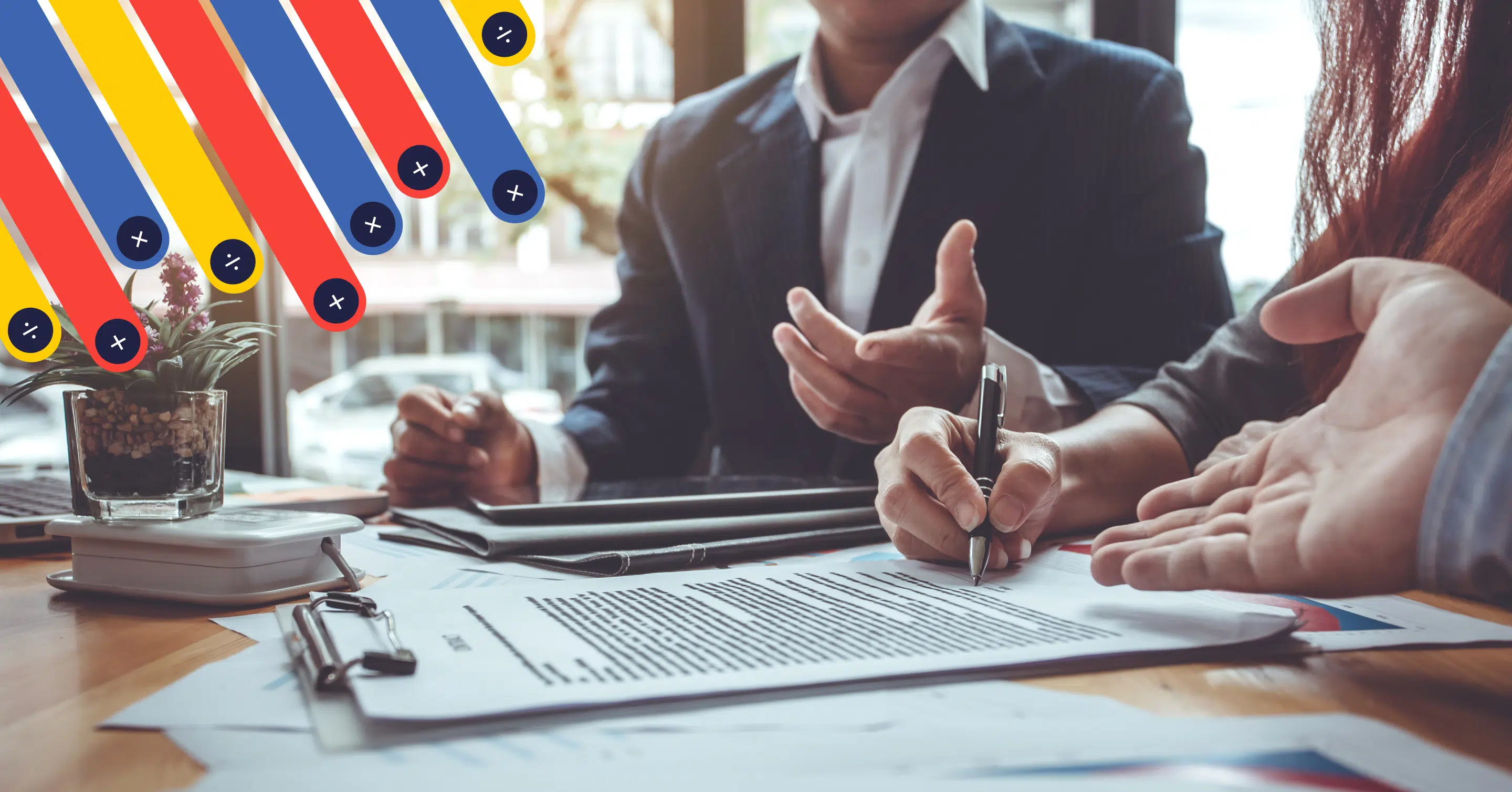Current Prime Rate
4.95%
June 30, 2025 – The prime interest rate in Canada is currently 4.95%.
Today’s Prime Rate in Canada
The prime rate in Canada today is 4.95%, serving as a key benchmark for borrowing costs across the country. The Canadian prime rate influences everything from variable mortgage rates to personal loans and lines of credit. Because it’s a floating rate, the prime moves in step with the Bank of Canada’s target for the overnight policy rate, which the Bank uses to manage inflation and economic growth.
Understanding how the prime rate works empowers you to make better decisions, whether you’re choosing between fixed and variable mortgages, planning a refinance, or simply monitoring your monthly budget as your cost of borrowing evolves.
- Canada’s prime rate is currently 4.95%, unchanged since March 2025.
- The prime rate adjusts shortly after each Bank of Canada policy rate decision.
- Variable-rate mortgages, HELOCs, and credit lines are directly affected by changes in the prime rate.
- Since 2023, the prime rate has declined significantly as inflation eased from historic highs.
- Economists expect gradual reductions to continue through late 2025, depending on the evolution of inflation and trade uncertainty.
Mortgage Industry Insights: June 2025
Bank of Canada Rate Announcement
The Bank of Canada’s (BoC) latest announcement on June 4th was a policy interest rate hold, leaving it unchanged at 2.75%. This continues to put a pause on the BoC easing cycle, as uncertainty and unpredictability caused by fluctuating tariffs and ongoing trade negotiations erode consumer and business confidence.
The Governing Council decided to hold the rate due to high uncertainty around US tariffs, a softer Canadian economy, and unexpected recent inflation data until the impact of US trade policies is clearer. The BoC stated that its focus is on ensuring that Canadians continue to have confidence in price stability during this period of global upheaval, aiming to support growth while keeping inflation under control.
While inflation has eased, the growth in shelter costs, particularly rent and mortgage interest costs, is currently the most significant contributor to total inflation. The Governing Council continues to monitor core inflation numbers when assessing policy rate decisions to ensure sustained downward momentum in inflation.
The next announcement will be on July 30th. Using nesto’s proprietary overnight index swap and forward rate calculation data, bond markets are currently pricing a probability of a 25 basis point cut.
Real Estate Market Update
On June 16th, the Canadian Real Estate Association (CREA) released its May home sales data. The data showed that home sales rose 3.6% between April and May. This marks the first gain since last November and was led by activity in the Greater Toronto Area (GTA), Calgary, and Ottawa.
May’s home sales activity reported that new listings rose 3.1% month-over-month. Home prices have stopped falling, growth is stabilizing nationally, and more buyers and sellers have entered the market in May compared to April.
CPI Inflation Update
Statistics Canada’s latest inflation data, released on June 24th, showed the Consumer Price Index (CPI) rose 1.7% year-over-year in May, matching the 1.7% increase in April. This was due to smaller price increases for rent and a decline in travel tours, which put downward pressure on the CPI this month. Smaller declines for gas and cellular services put upward pressure on CPI.
Prime Rate vs. Bank of Canada Overnight Rate
What Is the Bank of Canada’s Overnight Rate?
The overnight rate, also known as the policy rate, is the interest rate at which chartered banks lend money to each other on an overnight basis. Canada’s central bank, the Bank of Canada, uses the prime rate to guide monetary policy, raising it to cool inflation or lowering it to stimulate the Canadian economy.
Why Do Banks Adjust Prime Rates?
When the Bank of Canada changes the overnight rate, banks almost always adjust their prime rates within a few days. Although each lender technically sets their prime rate, competitive pressure keeps them aligned. Historically, the prime sits about 2.20% higher than the overnight rate.
As of June 2025:
- Bank of Canada Overnight Rate: 2.75%
- Prime Rate: 4.95%
How the Prime Rate Affects Your Mortgage
The prime rate is the foundation for variable-rate borrowing. It acts as the starting point lenders use to price a wide range of credit products, from personal lines of credit to business loans, and it plays a central role in determining how affordable borrowing becomes when economic conditions shift.
Before exploring the specifics of how variable and adjustable mortgages work, it is helpful to understand why the prime rate has such a significant influence. When it changes, it quickly ripples through nearly every type of variable lending in Canada, affecting both new applications and existing balances.
Variable-Rate Mortgages and HELOCs
Variable mortgage rates are typically advertised as prime plus or minus a percentage (representing the discount or premium). For example:
- Prime – 0.50% = 4.45% effective rate, if the prime is currently at 4.95%
VRM vs. ARM Explained
As prime fluctuates, your borrowing cost rises or falls. Changes to your lender’s prime rate will affect your monthly payment with an ARM and your amortization with a VRM. Prime rate changes impact your monthly payment (in adjustable-rate mortgages) and the allocation of each monthly payment between principal and interest (in variable-rate mortgages).
- Variable-Rate Mortgage (VRM): Your monthly payment remains the same when the prime rate changes, but a higher or lower portion of it goes toward paying interest, which directly affects your remaining amortization.
- Adjustable-Rate Mortgage (ARM): Your monthly payment adjusts automatically up or down as the prime rate changes; while your mortgage principal remains unaffected, preventing negative amortization.
What to Consider Between Fixed vs. Variable
Fixed mortgage rates are primarily driven by the Government of Canada bond yields, not the prime rate. However, if the Bank of Canada signals a long period of lower rates, bond yields often fall, indirectly reducing fixed rates.
When rates are high but expected to fall, variable products can offer savings. If stability is a top priority, locking into a fixed rate can help avoid payment shocks and provide predictable budgeting and cash flow.
*Most Recent Prime Rate Shown
Source: BankofCanada.ca
Prime Rate Forecast for Canada
The Bank of Canada held rates steady steady on June 4 amid:
- Ongoing US tariffs and trade uncertainty
- Weaker economic conditions
- Slower progress on core inflation
Bond market pricing suggests a 38% chance of a 25-basis-point cut by the next Bank of Canada meeting on July 30, with further gradual reductions possible into 2026 if inflation remains below the BoC’s 2% target. Recent updates to our mortgage rates forecast suggest higher fixed rates over the long term.
Prime Rate Trends and Historical Context
Over the last decade, Canada’s prime rate has experienced significant fluctuations, but historically, higher mortgage rates have been the norm compared to those available today.
Here are recent highlights to changes in the prime rate:
| Year | Prime Rate Range |
|---|---|
| 2020 | 2.45% (pandemic lows) |
| 2022 | 6.45% – 6.95% |
| July 2023 | 7.20% (peak) |
| December 2024 | 5.45% |
| June 2025 | 4.95% |
Historical Highs:
- 1981: Prime reached 22.75% during a period of runaway inflation.
Recent Timeline:
- 2022–2023: Rapid rate hikes to tame inflation.
- 2024: Steady rate cuts as inflationary pressures moderated.
- 2025: Cautious easing continues amid trade tensions and slowing growth.
Source: bankofcanada.ca
How Does the Prime Rate Impact Variable Mortgage Rates?
The Bank of Canada’s (BoC) target overnight rate directly influences prime rates set by lenders. When the policy rate changes, prime rates adjust accordingly. Most lenders calculate their prime rate as the BoC’s policy rate plus approximately 2.2%. This prime rate is the foundation for lenders’ posted rates, which they advertise to borrowers.
Posted rates typically include the prime rate plus or minus a specific percentage. For example, a lender might offer a prime + 0.5% or prime – 0.5% rate, meaning you’ll pay the prime rate with a premium or discount.
Variable-rate mortgages, tied to the prime rate, can have fixed or adjustable payments.
- Adjustable-rate mortgages (ARM): These mortgages have payments that fluctuate whenever the prime rate changes. Since the payment adjusts automatically, negative amortization is avoided when the interest owed exceeds the payment.
- Variable-rate mortgages (VRM): These mortgages keep your payments unchanged even if the prime rate changes. However, if the prime rate increases, more of your payment will go toward interest and less toward the principal, potentially leading to negative amortization—where your principal balance may not decrease as expected by the end of the term.
When the prime rate decreases, your variable mortgage rate follows, resulting in lower interest costs. In this case, a greater portion of your payment is applied to the principal, which can help you pay off your mortgage faster and reduce the remaining balance at the end of the term.
Frequently Asked Questions (FAQ) About the Prime Rate in Canada
What is Canada’s current prime rate?
As of Monday June 30, 2025, Canada’s prime rate is 4.95%.
How does the prime rate impact variable mortgage rates?
Your mortgage rate moves in lockstep with the prime rate. For example, if your mortgage is prime minus 0.50% and the prime increases by 0.25%, your effective rate rises by the same amount.
Does the prime rate affect fixed mortgage rates?
Not directly. Fixed rates are primarily tied to government bond yields; however, expectations about future movements in the prime rate can also influence bond markets over time.
What is the forecast for the prime rate in 2025?
Many mortgage rate forecasts anticipate a gradual decline, with the rate potentially falling 25 basis points (0.25%) once or twice by year-end.
How can I protect myself from prime rate increases?
Consider switching to a fixed-rate mortgage, making extra payments when interest rates are low, or maintaining savings or having a budget buffer to handle potential rate increases.
Final Thoughts
Canada’s prime rate is one of the most important benchmarks for borrowers. Whether you’re renewing, refinancing, or buying a home, understanding how the prime rate influences your mortgage and credit facilities can help you make better financial decisions.
Looking to make the most of today’s mortgage market? Contact nesto mortgage experts for tailored advice and low rates that match your long-term financial strategy.
Why Choose nesto
At nesto, our commission-free mortgage experts, certified in multiple provinces, provide exceptional advice and service that exceeds industry standards. Our mortgage experts are non-commissioned, salaried employees who provide impartial guidance on mortgage options tailored to your needs and are evaluated based on client satisfaction and advice quality. nesto aims to transform the mortgage industry by providing honest advice and competitive rates using a 100% fully digital, transparent, seamless process.
nesto is on a mission to offer a positive, empowering and transparent property financing experience – simplified from start to finish.
Contact our licensed and knowledgeable mortgage experts to find your best mortgage rate in Canada.













